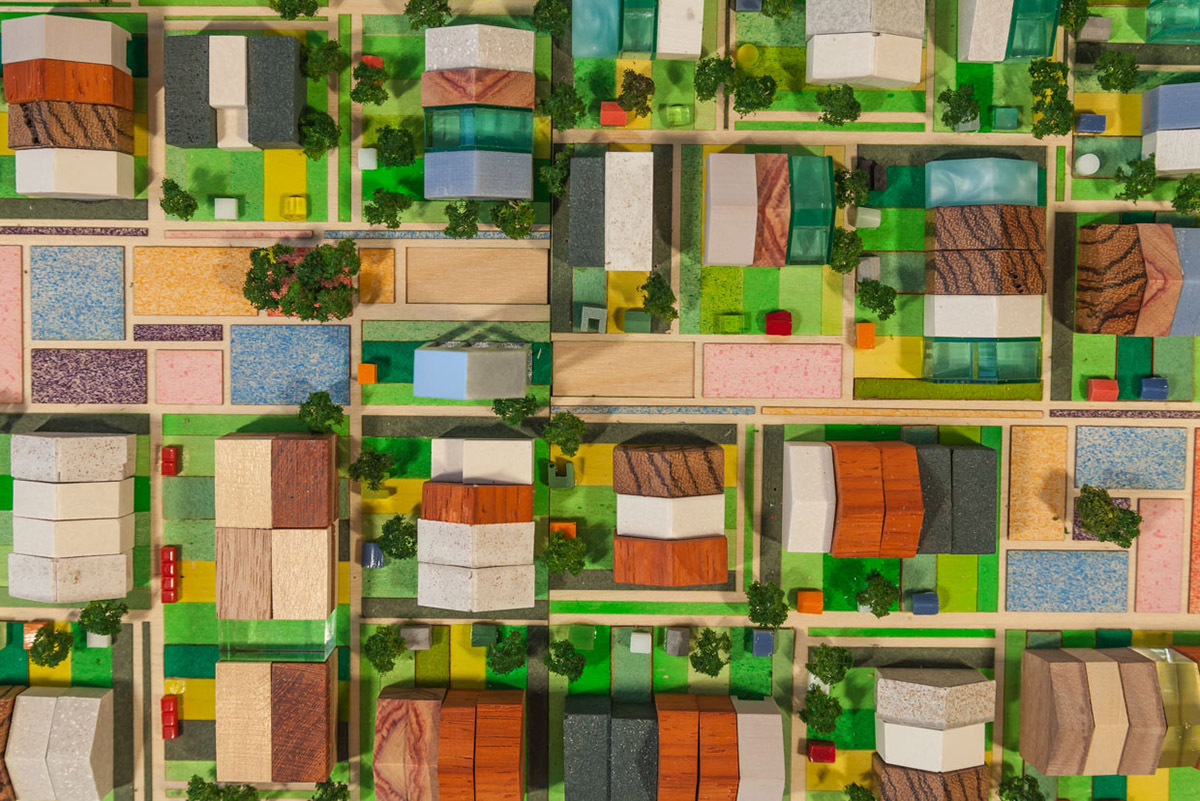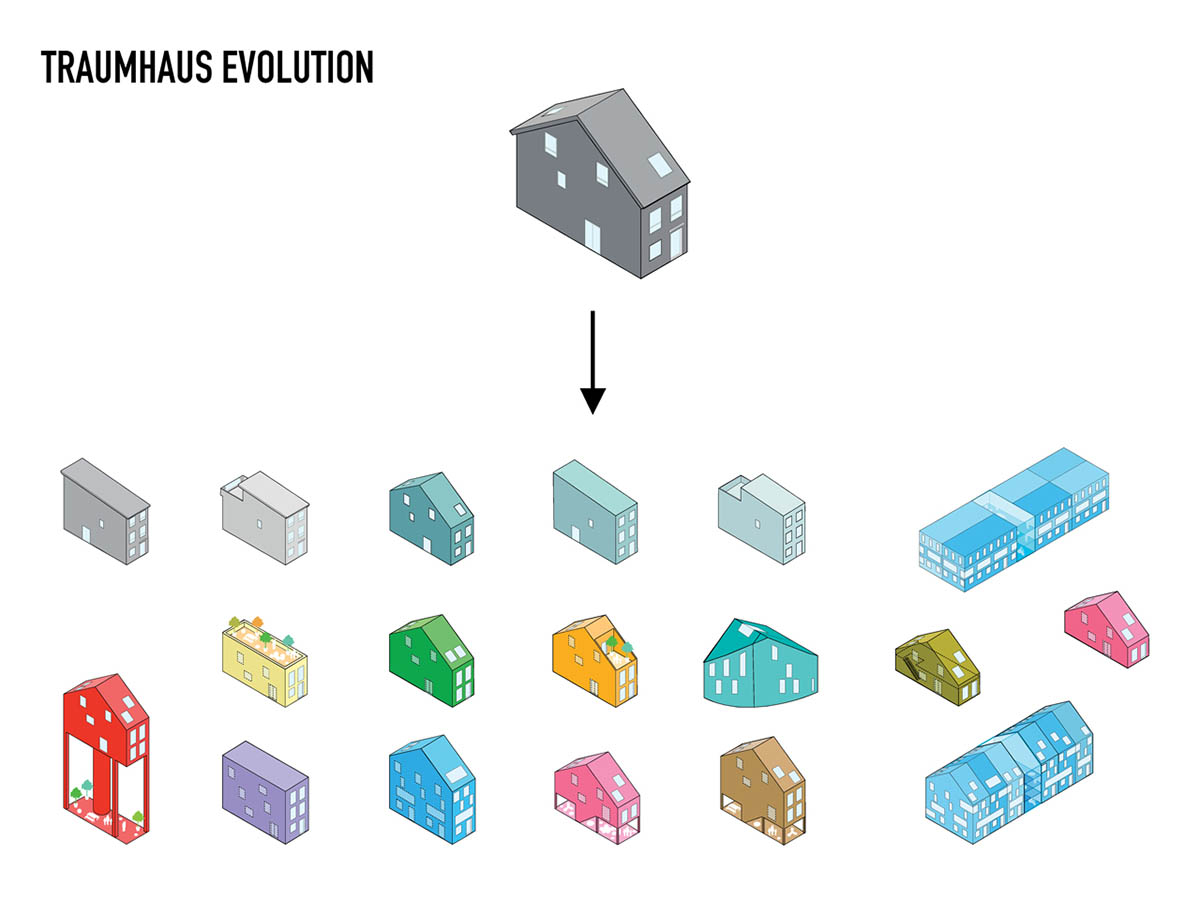Submitted by WA Contents
MVRDV with Traumhaus redefine affordable suburban housing
Germany Architecture News - Apr 14, 2016 - 15:50 13241 views

MVRDV and Traumhaus add affordability and individuality to suburban living.
MVRDV, in partnership with housing developers Traumhaus, offer a response to the current state of modern day suburbia and the village as part of the redevelopment of former US Army barracks in Mannheim, Germany. MVRDV won the competition for the 27.000m2 residential project, which breaks apart the standard housing model and redefines suburban living through giving residents the affordable suburban lifestyle, with individuality, diversity and community spirit.
A huge range of variations on the Traumhaus standard typology will be distributed throughout the site encouraging social diversity as well as a lively mix of different life styles. In between the houses, the park dissipates through the site in a series of path networks, broken up by spaces designed for public activity.

The mix of properties and public spaces encourage diversity and community spirit. image © MVRDV.
MVRDV partnered with Traumhaus, a housing producer which focuses on low-cost high-quality homes based on standardised elements, to design 27.000m2 of housing, gardens and public spaces. The scheme is situated in Funari, one of five districts in a major re-development of the Benjamin Franklin barracks in Mannheim. The new village is a catalogue of dwelling and garden typologies, a huge set of variations on Traumhaus’ original design, each designed to support a different type of household and demographic.

Unique private gardens become an extension of the park and communal green spaces. image © MVRDV.
The collaboration combines tradition with extravaganza, experience with experimentation, quality with quantity, sharing the ideal of variety and social access with innovation and realisation. Through encouraging a range of different inhabitants to live in the area MVRDV hopes to transform the modern idea of village life with segregated households, into a rich diverse community where individuality and quality of life are paramount.

Traumhaus Funari Mannheim Competition Model. image © Made by Mistake
Boundaries disappear between the surrounding park and the fully pedestrianised ‘village’. The green spaces dissipate into a network of paths through and around the site, which open out into sports parks or themed eco-environments such as fruit alleys or butterfly gardens. Each household also has a unique private garden whose typologies vary much in the same way as the houses, handpicked by the residents to provide the outdoor living that suits them; whether it be for the children to run around or for growing vegetables. These gardens though are really just an extension of the park which permeates through the site.

Traumhaus Funari Mannheim Competition Model. image © Made by Mistake
“Funari brings back the varied neighbourhood. It’s where you know your diverse community, where the kids can run around in the street, where your home is exactly what you need it to be.” Explains MVRDV Founding Partner Winy Maas. “But also it’s a comment on the housing system today. A system where young people can’t afford to buy, where ‘affordable housing’ is of such a poor quality, and where the suburban dream stamps out community spirit and individual expression. We want to show that there is another way''

image © OMA
Whether it be students or the elderly; individualists or large families, MVRDV’s design fulfils the individual needs of Funari’s inhabitants by not only giving them a house that suits their living needs perfectly, but by offering them complete individuality with their dwelling. Vegetated houses appeal to the budding eco-family, whilst stilt houses for starters open up the ground floor for future expansion. Monochrome wooden houses could be for the traditionalists, or the single storey tent-house for the elderly. Two larger apartment blocks combine various models, student housing and the elderly for example, in order to encourage diversity on an even more local scale. The houses, split into five main categories, will be arranged based on a predefined ratio of living types. This method means that diversity is inevitable and, unlike in most residential area, gentrification or community isolation will be avoided.

image © OMA
Despite the pedestrianisation of the scheme, residents will have no issues accessing their properties by car because of the subterranean parking situated underneath the entire scheme. This enables the ground level to remain safe, green and family friendly. Residents are however encouraged to use the tram line which runs adjacent to the development. Access for emergency vehicles have also been designed into the development.

image © OMA

image © OMA

image © OMA

image © OMA

image © OMA

image © OMA

image © OMA

The housing catalogue ... an evolution of the Traumhaus concept. image © OMA
Top Image © OMA
> via OMA
